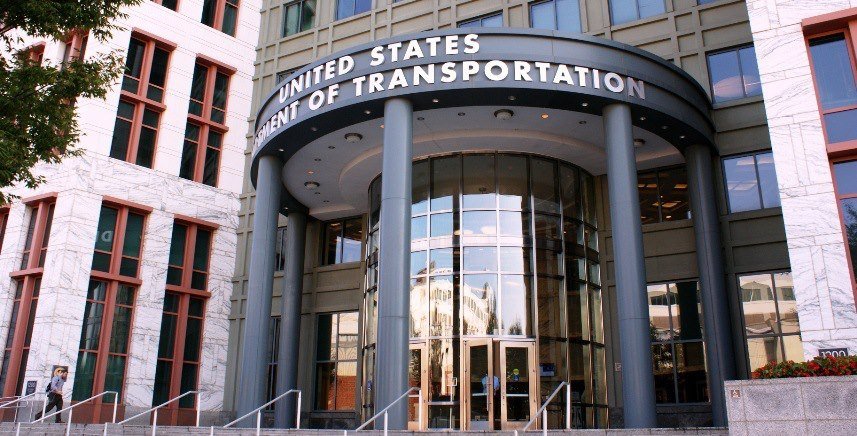Because of the shortcomings in the Infrastructure Investment and Jobs Act (IIJA)’s actual policy, an enormous amount of pressure now rests on USDOT and Secretary Buttigieg to deliver on the administration’s promises. But the good news is that there are scores of actions that USDOT can take to deliver positive outcomes for equity, climate, safety, state of repair, and enhancing community connections.

After 200+ weeks of #InfrastructureWeek, Congress was sorely overdue to take action on surface transportation reauthorization since the FAST Act was fast expiring in 2021. The House took up the challenge by crafting and passing the bold five-year INVEST Act in July, which would have moved the needle in major ways. But the Senate failed to produce the same kind of transformative bill, instead playing the politics of “compromise” and “bipartisanship” in what would become the infrastructure deal as we know it (the IIJA).
With the conclusion of #InfrastructureWeek on Capitol Hill and Congress pivoting to other issues of national interest, the media spotlight on the US transportation program will quickly dim.
This is unfortunate, because in many ways, the real work on infrastructure is just beginning—especially for USDOT and the administration. Advocates and the media are failing to grasp that the first year of transportation funding from the IIJA is already flowing out to states and metro areas, supercharging project lists that were decided upon years ago in some cases. And states have made it clear that they plan to maximize the use of the flexibility that they have won from Congress to spend this money how they deem it in their interest.
Using this historic infusion of infrastructure funding to make meaningful progress towards equity, climate change, and fostering community economic opportunities is going to be an uphill battle, but that is what the Biden administration has promised. They certainly have the talent and the expertise to make it happen, but Secretary Buttigieg will need to exercise his authority and the flexibility of US transportation policy to realize these outcomes.
Over the next few weeks, we will unpack the details on a range of actions that could be taken administratively to further our three principles and national priorities of economic development, equity, and climate change mitigation. For now, here are six immediate and important actions that would make a big difference:
1. A new commitment to passenger rail needs equally committed leaders.
As the country begins a heavy investment in intercity passenger rail and Amtrak, its Board of Directors is made up of members whose terms have expired (other than Transportation Secretary Buttigieg and Amtrak CEO Flynn). It is time for the President to nominate a new and current Board to lead Amtrak through this unprecedented opportunity to create a world class passenger rail system and push Amtrak to deliver on a new customer driven service delivery mission.
2. Find other ways to prioritize safety.
In late October, Secretary Buttigieg cited the country’s unacceptable traffic death “crisis”:
We cannot and should not accept these fatalities as simply a part of everyday life in America. No one will accomplish this alone. It will take all levels of government, industries, advocates, engineers and communities across the country working together toward the day when family members no longer have to say good-bye to loved ones because of a traffic crash.
With a call to action on safety, the USDOT should bring more attention to the impact of roadway design on safety, including the removal of references to the disproven 40-year old study that claimed 94 percent of crashes are caused by human error and discouraging grantees and the press from using the term ‘accident’ as opposed to ‘crash.’ Furthermore, the USDOT can look to prioritize safety investments across all funding streams (more on that next).
3. Bake important priorities into the many competitive grant programs.
Use competitive grant programs to reward project sponsors that have made a dedicated commitment to safety, state of repair, climate, and equity and to focus the sponsors that have not on addressing those issues. For example, those states who set regressive safety targets could be restricted from getting funding for safety-oriented projects.
4. Require clearer data for the public on transportation emissions.
Track climate emissions per capita from transportation by state and publish results and trends online.
5. Consider the poor track record of transportation models.
Require major NEPA (environmental review) documents to include a report on the past accuracy of any transportation demand modeling used, as well as documenting the expected induced demand from projects.
6. Streamline the arduous process of applying for competitive grants.
The IIJA also establishes several new competitive grant programs. To ensure they are accessible to communities of all sizes and capacity, USDOT should create an easier, more automated process for receiving applications and benefit-cost analyses for all competitive grant programs.
How this historic bill gets implemented and how the hundreds of billions in new transportation spending is spent will determine how far we are able to move the needle on key goals. We will continue to unpack more ways that the administration, states, metros, and advocates can engage in the implementation of the IIJA to produce a transportation system that is safer, cleaner, and more effective at connecting people to jobs and opportunity.
The post From policy to action: Six things USDOT should do yesterday to maximize the potential of the infrastructure deal appeared first on Transportation For America.









